Wood Lathe
In the second half of the class we will learn about the wood lathe. The lathe has been around for over 3000 years, first invented by the ancient Egyptians. The device would be operated by 2 people with one person turning the wood with a rope. These days the rotation is powered by a motor.
I was feeling nervous about this skill builder so I watched some instructional videos on YouTube. This one was my favorite:
She's my hero.
I started with this piece of wood I bought at the hardware store. It is part of a closet rod that had been cut in half for some other customer. It is almost 1.5 inches in diameter. I cut it in half again to fit it on the lathe. I'll use the rest of it for a future project.

Then I mounted it on the wood lathe. I spent a good half an hour on this because I wanted to take my time and do it correctly. I had some difficulty mounting it so that the wood lathe's axis of rotation was properly lined up with the true center of the cylinder. The end result wasn't perfect but I don't think perfection was possible because the wood wasn't perfectly round to begin with.

I positioned the banjo and placed the larger tool rest. Ready to carve.
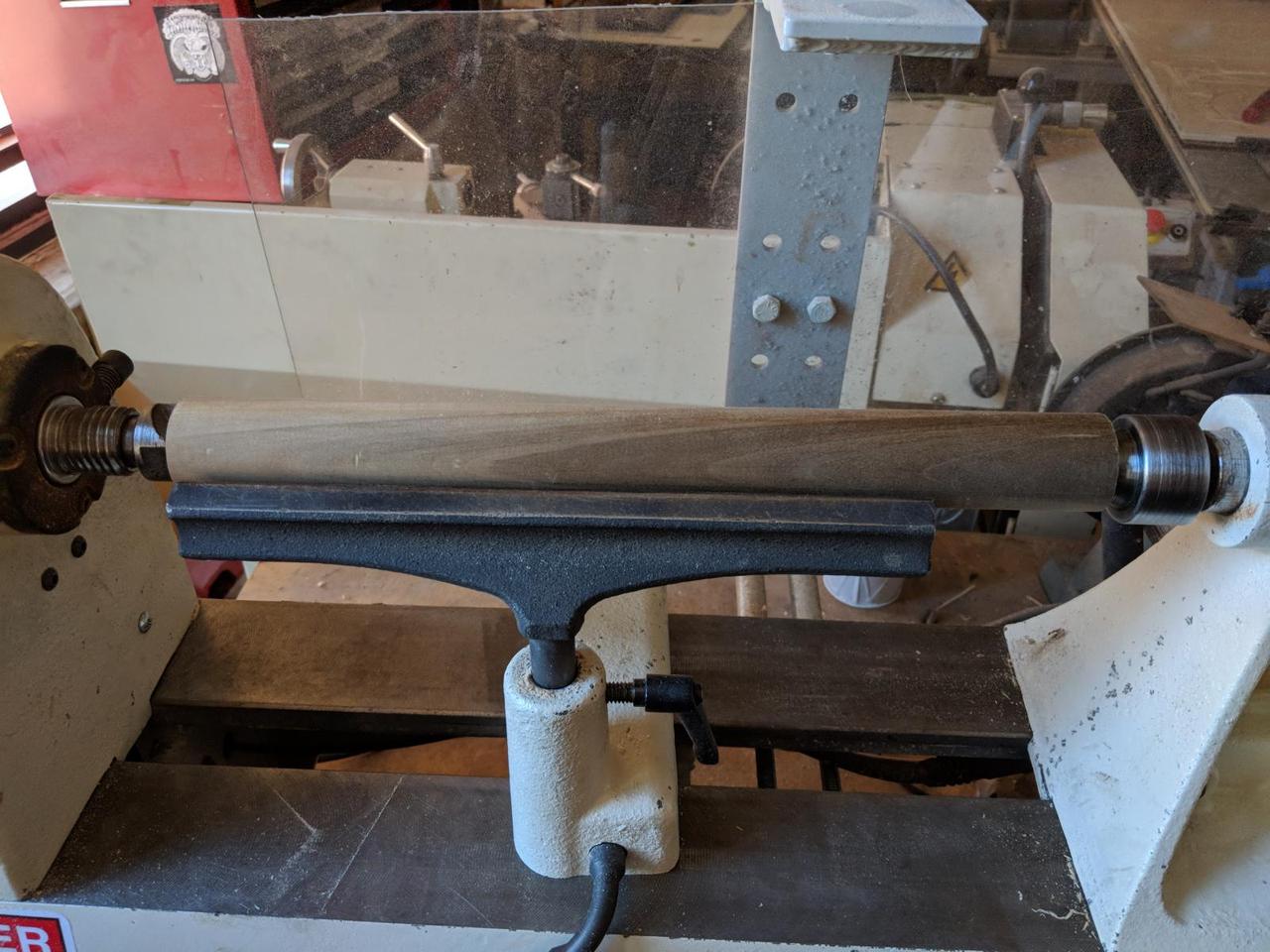
My first task is to get it to round.
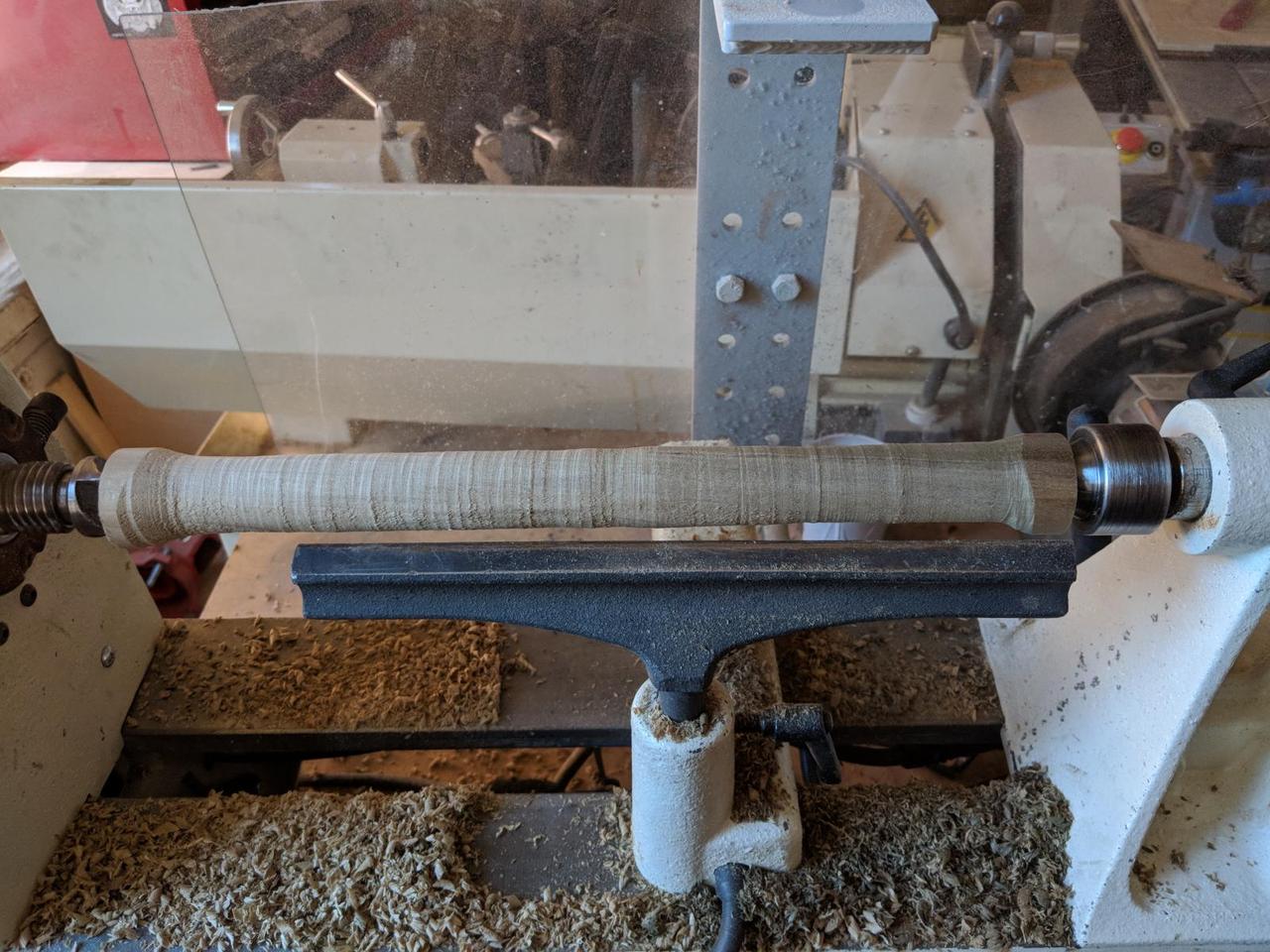
This took some time. Sawdust was everywhere.
Eventually I succeeded. Notice the diameter is a lot less than it was when I started.

I wanted to experiment with the tools and get a feel for what I can do with them. I started by making some curved indentations along the left side of the wood.
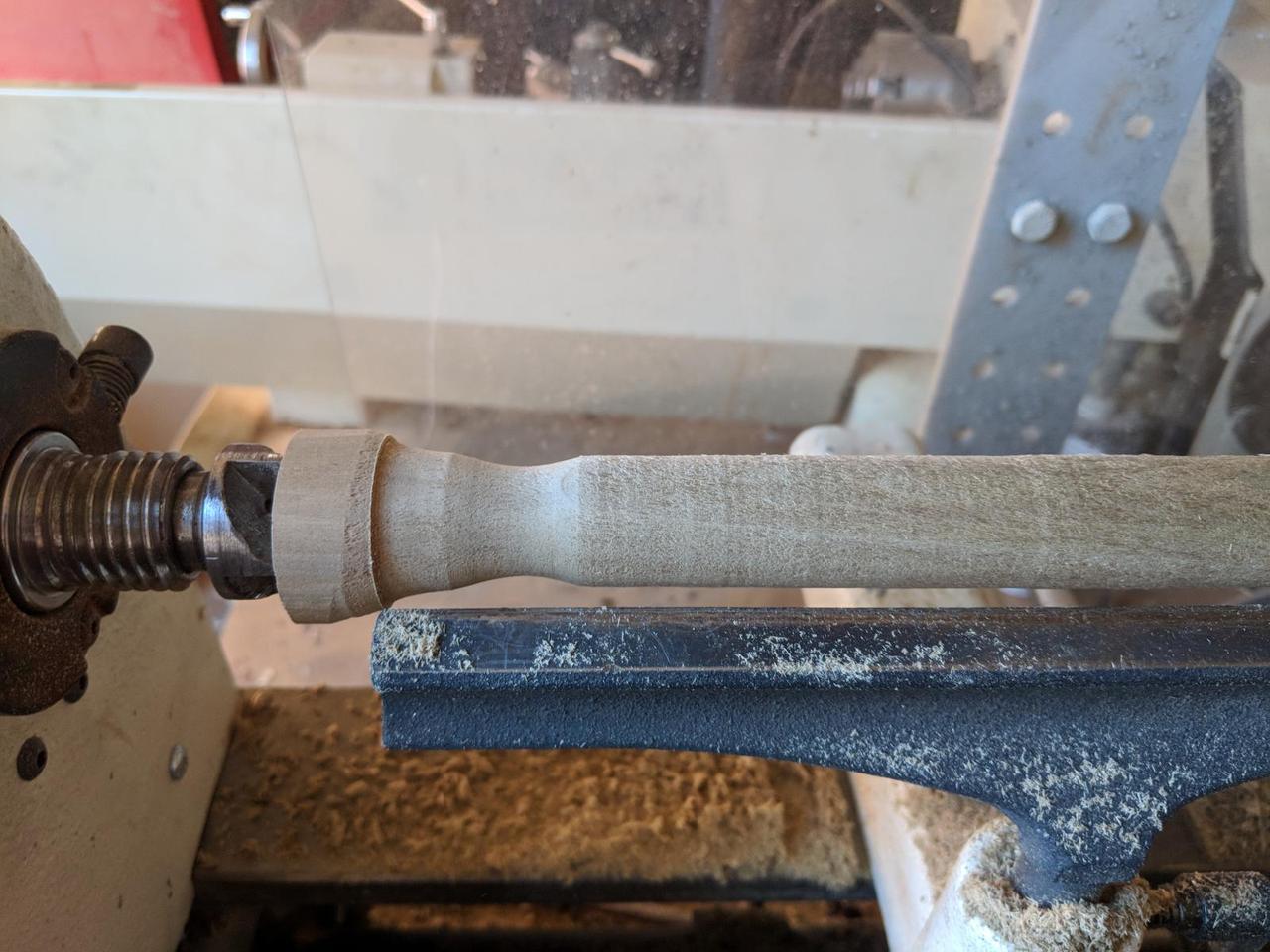
After doing this several times I used the gouging tool on the right side.
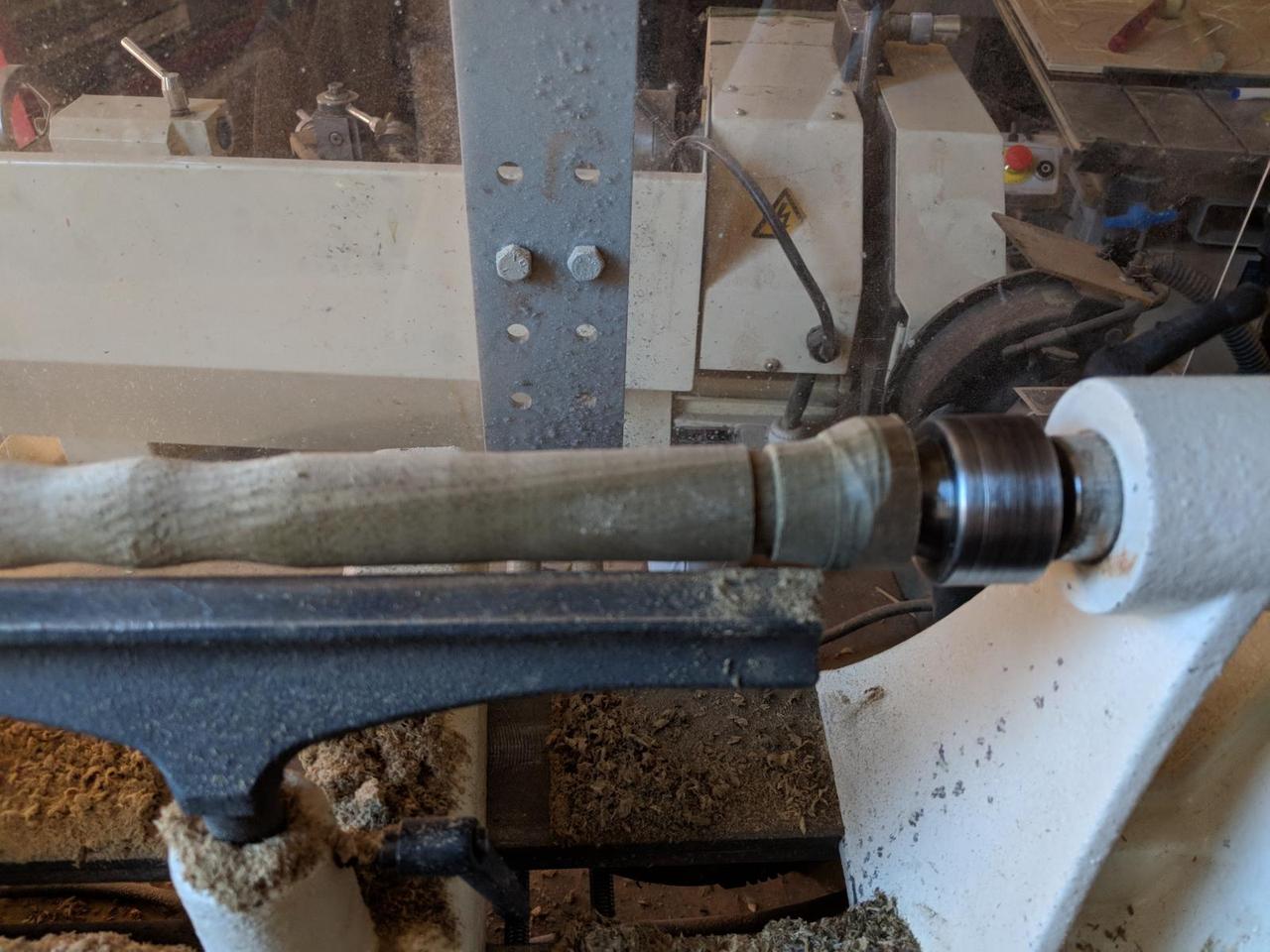
After experimenting for a while I felt I had a good understanding of how to use these tools.
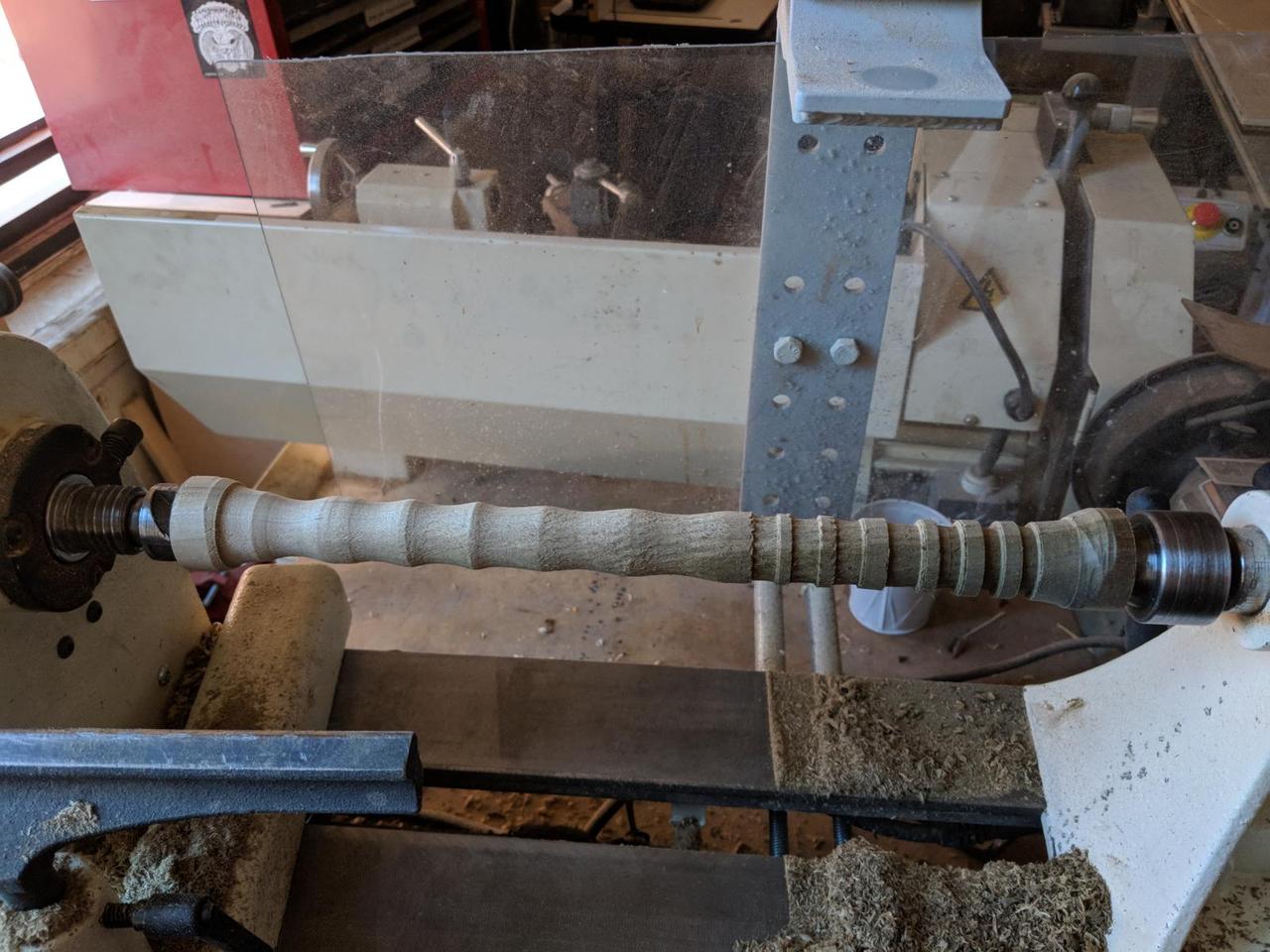
Next I needed to use the lathe to sand. This was very easy because the lathe moves the wood for me. All I need to do is hold the paper in place.
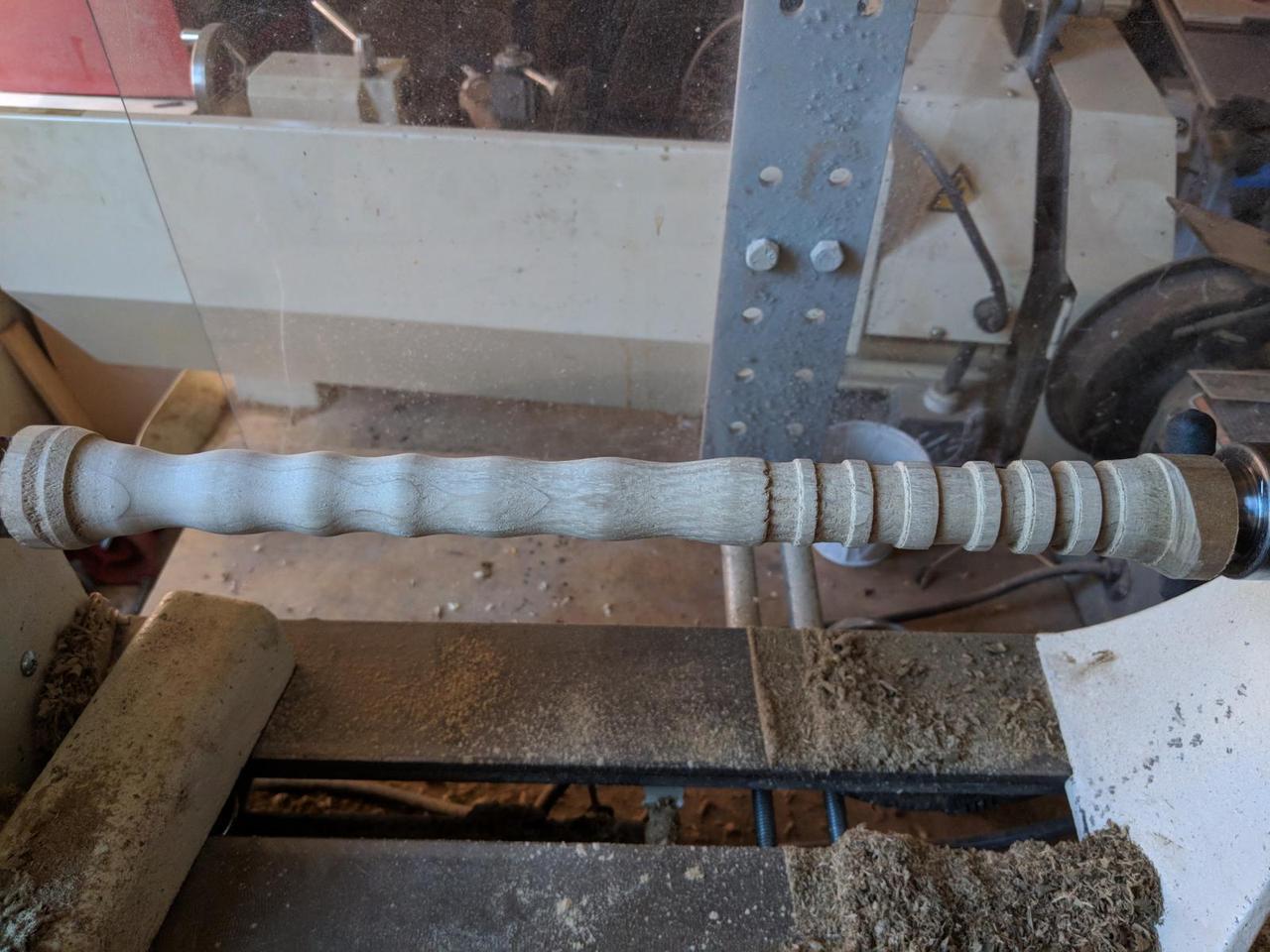
My last step was to use the sawdust to burnish the wood. I just held a handful of sawdust against the wood as it rotated. This seemed to have a nice effect on the wood. The process also made the sawdust fly around but I vacuumed it up before leaving the shop.
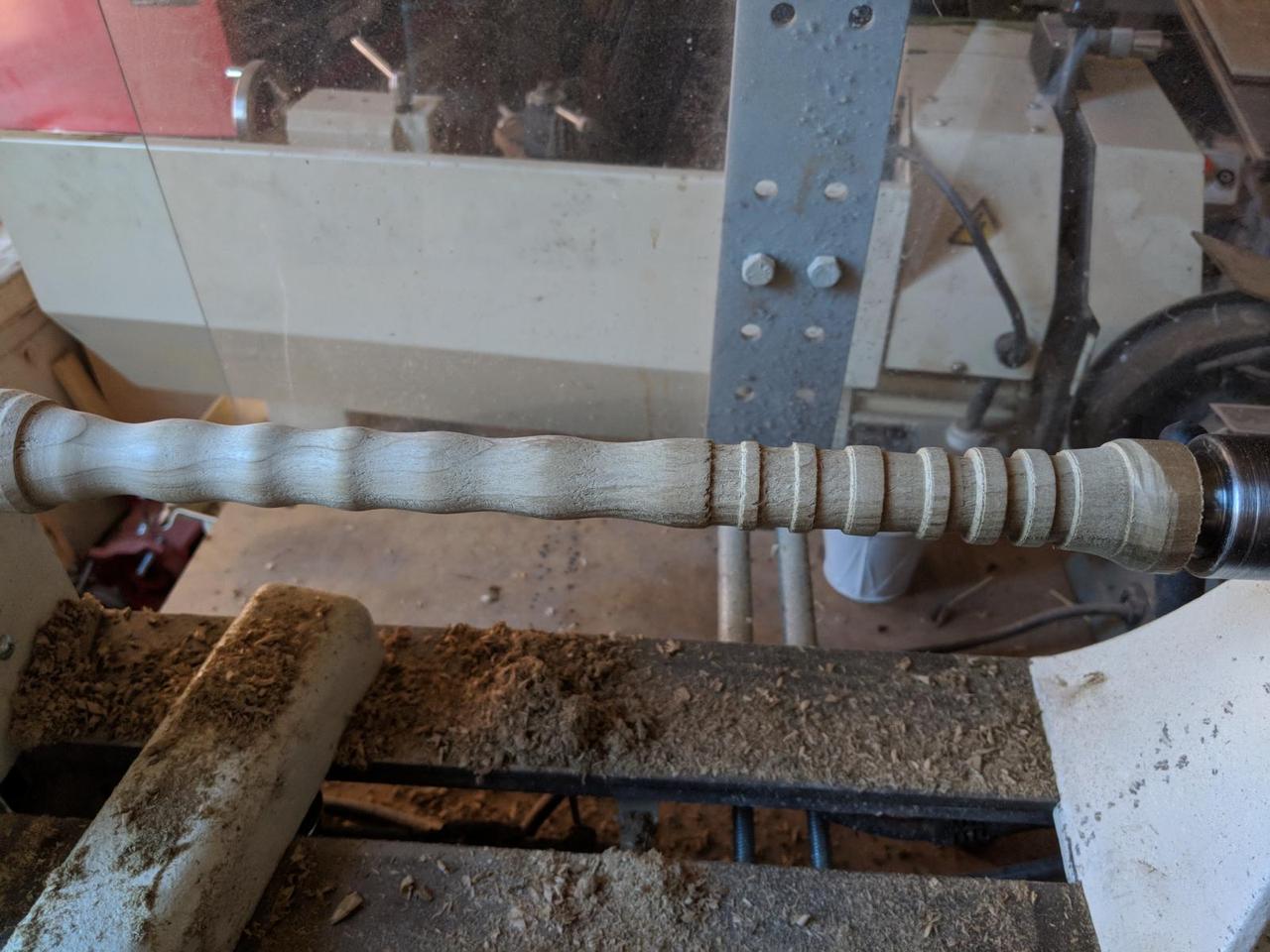
The end result is boring looking but demonstrates a basic understanding of the wood lathe.
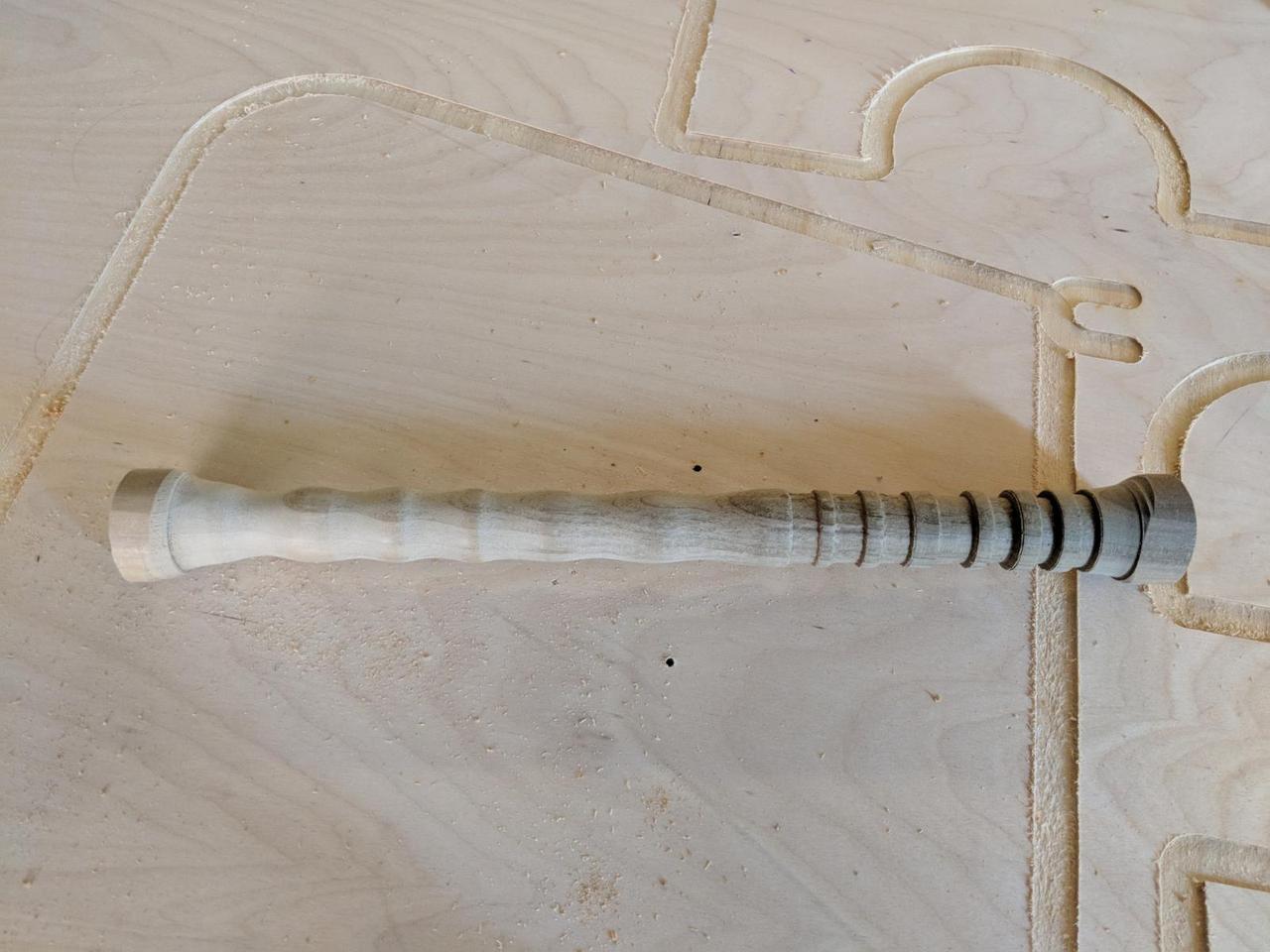
I cut off the un-carved ends. Pictured below you can see the final result along side the other half of my original piece of wood.

I'm happy to have successfully employed the wood lathe in my project. I don't think it is my favorite tool but would be happy to use it again.
Comments